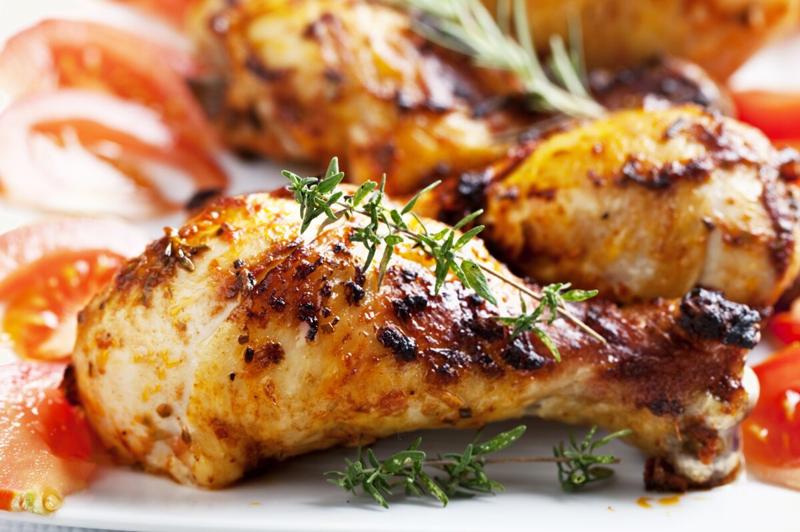Contrary to common misconceptions, the Zone diet is not primarily focused on weight loss; instead, it is positioned as an anti-inflammatory diet. The central goal of the Zone diet is to sustain optimal levels of insulin and other pro-inflammatory hormones by adhering to specific proportions of macronutrients at each meal: 40% carbohydrates, 30% protein, and 30% fat.
What Is the Zone Diet?
Barry Sears, a biochemist and the architect of the Zone diet, contends that treating food like a precisely dosed medication is crucial. According to Sears, elevated insulin levels, coupled with the presence of omega-6 fatty acids, give rise to hormones that initiate inflammation—a factor he identifies as a key contributor to the obesity epidemic.
Nevertheless, the Zone diet is not designed with the primary goal of weight loss but rather as an anti-inflammatory regimen. The key aim of the Zone diet is to sustain balanced levels of insulin and other pro-inflammatory hormones by adhering to precise proportions of foods in every meal: 40% carbohydrates, 30% protein, and 30% fat.
Nonetheless, according to Sears, these percentages are not rigid, and the body necessitates a well-balanced combination of these nutrients for optimal functioning and overall health.
Budget friendly. Foods for this diet are easy to find at a typical grocery and don’t require expensive or specialty food items.
Vegan or vegetarian friendly. Recipes can be easily modified for a vegan or vegetarian diet.
Gluten-free friendly. Recipes can be easily modified and still follow a gluten-free diet.
Halal friendly. Recipes can be easily modified and still follow a halal diet.
Kosher friendly. Recipes can be easily modified and still follow a kosher diet.
Low-carb. Low-carb diets contain significantly less calories from carbs than the federal dietary guideline's recommendation of 45% to 65% of total daily calories.
How Does It Work?
You’ll eat five times a day: three meals and two snacks.
Each meal should contain no more than 400 calories with the recommended balance of protein (30%), carbs (40%) and healthy fat (30%). Pro-inflammatory fats to avoid are those rich in saturated and omega-6 fatty acids.
When making dinner, for example, divide your plate into three equal sections. Put a single portion of a low-fat protein, such as chicken or fish, in one. Fill the other two sections with colorful carbs (primarily non-starchy vegetables and limited amounts of fruits). Top it off with a dash of healthy fat from olive oil, nuts or avocado.
Although no food is off-limits, certain types are encouraged. Optimal protein choices include skinless chicken, turkey, fish, egg whites, low-fat dairy, tofu and soy meat substitutes.
Dieters are instructed to choose carbs that are low on the glycemic index, a ranking of how carbs affect blood sugar. Low-GI carbs are said to keep your blood sugar and metabolism steady and you feeling fuller longer, while high-GI “bad” carbs do the opposite. Your best bets are vegetables (except starchy corn and peas), fruits (except bananas and raisins), and oatmeal and barley. Stay away from pasta, bread, bagels, cereals and potatoes.
While small amounts of healthy fats are added to each meal, avoid fatty red meat, egg yolks, liver and other organ meats and processed foods – all high in saturated fat.
The only measuring tools you need are your hand and your eye, Sears says. A portion of chicken or fish would be no more than what can fit in the palm of your hand, which for most women equates to 3 ounces and for men is 4 ounces.
Almost as important as what you eat is when you eat. Meal and snack timing are crucial on Zone. If you don’t eat often enough, your blood sugar will dip, triggering hunger pangs. You should never go more than five hours without eating. Have breakfast within one hour of waking. If that’s at 7 a.m., for example, have lunch at noon, a snack at 5 p.m., dinner at 7 p.m. and another snack at 11 p.m.
Can I Lose Weight on the Zone Diet?
“This diet is designed to improve health and lower risk for chronic disease, so weight loss is a bonus – not the primary goal,” says Sonya Angelone, a registered dietitian nutritionist in the San Francisco Bay area.
Short-Term Weight Loss
You’ll likely lose weight on Zone in the short run.
Studies consistently show that following the Zone diet can lead to moderate weight loss in under 1 year (1, 2, 3).
In a recent review evaluating 14 diets that encompassed nearly 22,000 participants, the Zone diet was in the top three most-effective for weight reduction and blood pressure reduction (4).
A recent Cochrane review showed similar results for weight loss between low-carb diets, including Zone, and balanced-carb, low-calorie diets. Some people lost up to 26 pounds over periods of three to 8.5 months (5).
Long-Term Weight Loss
It’s less certain whether you’ll keep losing weight from following the Zone diet in the longer run.
Weight loss diminished at one year among all the evaluated diets, including Zone, in one comprehensive review of over 120 diet studies (4).
“The Zone diet will most likely help you lose weight, as with any diet that restricts calories,” Angelone says. However, she adds that most diets don't provide long-term success, since diets are temporary interventions. In order to make weight loss last in the long term, Angelone says that someone must have consistency in their healthy lifestyle and dietary changes.
Weight Maintenance and Management
Similarly, it’s unclear whether following the Zone diet in itself will support weight maintenance over time.
There is some evidence that higher dietary protein intake might help people who have already lost weight maintain their weight loss better over time. However, this has not been studied as high as the 30% of caloric intake that the Zone diet suggests (6).
A 2020 editorial published in the BMJ summarizes challenges faced by everyone in sustaining weight loss – no matter what specific diet they choose. They note that people who maintain their weight loss over time often self-monitor their weight and have a regular physical activity routine (7).
“An important component of success with this diet is exercise, which is important for weight loss and maintenance,” Angelone notes. “As long as the diet is sustainable, the results will be as well.”


Do: Have two snacks a day.
What Does the Zone Diet Cost?
What Costs Are Related to the Zone Diet?
Costs may include:
Supplements. Sears advises an omega-3 fatty acid supplement since it’s difficult to get enough omega-3 from food (particularly if you don’t like fish). The website offers additional supplements for purchase.
Zone-brand foods. The Zone website offers the PastaRx line of orzo and fusilli at about $59 for a four-pack or about $15 for a single package, as well as bars, shakes and olive oil.
Zone books. "A Week in the Zone" and "The Resolution Zone" are available in paperback and e-book.
Extras. There are optional, luxury extras. While the 2023 Zone cruise has been cancelled, it may return in 2024. The cruise is a 7-night trip with Sears and Zone diet experts and includes coaching and seminars.
Doing the Zone Diet on a Budget
Opt for in-season produce and other foods that are on sale.
Some fruits and vegetables may be just as healthy in a can or frozen. Look into whether you could purchase some produce in alternative forms, as long they're free from added preservatives, sodium and sugar.
Buy items – like oats, barley and nuts – in bulk to save money over time.
Purchase lean meats that are a mainstay of the diet when they're on sale. Freeze portion-sized pieces for later use.
You can take advantage of discount offers for Zone products when you go on the website.
Is the Zone Diet Easy to Follow?
It’s easy to become a Zone member by simply signing up online and providing your email address. However, following the diet is more challenging.
Making sure each meal contains the right percentage of carbs, protein and healthy fat requires awareness. And some dieters may find Zone’s strict eating schedule – breakfast within one hour of waking up, and then snacks and meals every five hours – daunting.
Who Should Not Try the Zone Diet?
Otherwise, most anyone can follow this diet, especially if good choices are made with the guidelines.
Pros
Filling – it's rich in high-fiber foods.
No off-limit foods or food groups.
A clearly defined plan with recipes.
Diverse foods and flavors.
Cons
Tedious portioning, meal planning or prep.
Lots of rules to remember.
Little research to back it up.
What Can I Eat? Do's and Don'ts
Have your two daily snacks, and make sure you eat every five hours so your blood sugar doesn’t dip, triggering hunger pangs. You may consider purchasing optional Zone products for easier meal prep.
Foods to Eat
Skinless chicken.
Turkey.
Fish.
Egg whites.
Tofu.
Soy and soy meat substitutes.
Non-starchy vegetables, like artichokes, broccoli and zucchini.
Lower-sugar fruits, like apples, berries and grapes.
Oats and oatmeal.
Barley.
Nuts, like almonds, peanuts and pistachios for healthy fat (in small amounts).
Almond butter and natural peanut butter (2 teaspoons or less).
Olive oil (sparingly).
Foods to Avoid (or Limit)
Processed grains and carbs, including bread, bagels and cereal.
Pasta.
Potatoes.
Fatty red meat.
Egg yolks.
Liver and other organ meats.
Processed foods – all high in saturated fat.
Soda (regular or diet).
Foods with added sugar.
High-sugar fruits like bananas and dried fruits (including raisins).
Starchy vegetables, like corn, peas and potatoes.
Alcohol (drink in moderation).
Vegan and Following the Zone Diet
On the Zone diet, you should fill two-thirds of your plate with fruits and vegetables – the mainstays of a vegan diet. Given the diet's emphasis on lean protein as a high percentage of your caloric intake, it may be difficult to reach that 30% protein goal. The Zone diet website recommends tofu, tempeh, seitan and pea protein supplements for those trying to follow the Zone diet and stay plant-based. See all vegan diets.
Vegetarian and Following the Zone Diet
The Zone diet can certainly be followed by vegetarians. In fact, the website contains a wide selection of vegetarian-friendly recipes. See all vegetarian diets.
Gluten Free and Following the Zone Diet
Because common gluten-containing grains, such as wheat, barley and rye, are discouraged on the Zone diet, it’s an easy choice for individuals with celiac disease or gluten sensitivity. See all gluten-free diets.
Halal and Following the Zone Diet
Red meat is avoided on the Zone diet, so you’ll only need to avoid shellfish and foods containing alcohol to maintain a halal diet. See all halal diets.







